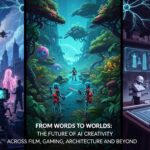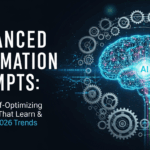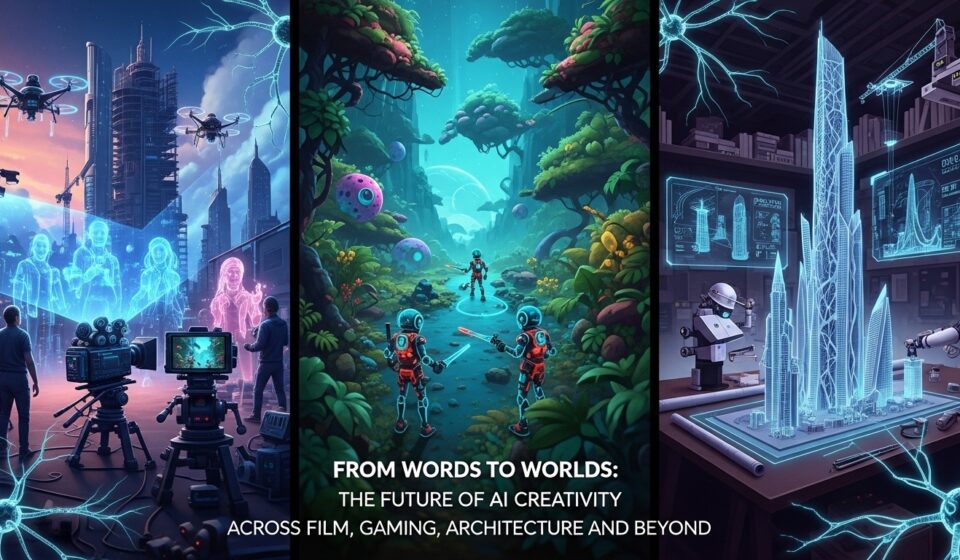
From Words to Worlds: The Future of AI Creativity Across Film, Gaming, Architecture and Beyond
From Words to Worlds: The Future of Prompt-Driven AI Creativity
The boundary between description and creation, between imagining and manifesting, has collapsed into a single act: prompting. We stand at the threshold of a profound transformation where natural language becomes the universal interface for bringing ideas into existence across virtually every creative domain. Prompt-driven AI creativity—the ability to generate complex outputs through carefully crafted text instructions—has already revolutionized image creation, but this represents merely the beginning of a broader shift. The same fundamental capability that turns “a glowing forest under starlight” into a vivid illustration is now being extended to video generation, 3D modeling, architectural design, game development, film production, and immersive virtual environments. This expansion promises to fundamentally reshape not just creative industries but how humans conceptualize and interact with digital spaces, entertainment, built environments, and simulated realities.
Table Of Content
- The Expanding Universe of Generative AI Capabilities
- Transforming Film and Visual Storytelling
- Revolutionizing Gaming and Interactive Entertainment
- Transforming Architecture and Spatial Design
- Immersive Virtual Worlds and the Metaverse
- Simulation, Training, and Educational Applications
- Technical Infrastructure and Enabling Technologies
- Ethical Considerations and Societal Implications
- Conclusion: The Prompt as Universal Creative Interface
The technical infrastructure enabling this transformation has reached critical maturity. Advanced AI models now demonstrate multimodal understanding—processing text, images, video, audio, and spatial information as integrated inputs and outputs. Reasoning capabilities allow systems to understand complex requirements, maintain consistency across sequences, and translate abstract descriptions into concrete implementations. Real-time processing speeds enable interactive creative workflows where prompts immediately manifest as visual or spatial changes. Combined with increasingly sophisticated natural language processing, these capabilities create the conditions for prompt-driven creation to expand from individual images to complete environments, narratives, and experiences. The implications extend far beyond efficiency improvements in existing workflows; they suggest entirely new paradigms for how humans design, build, and inhabit both physical and digital worlds.
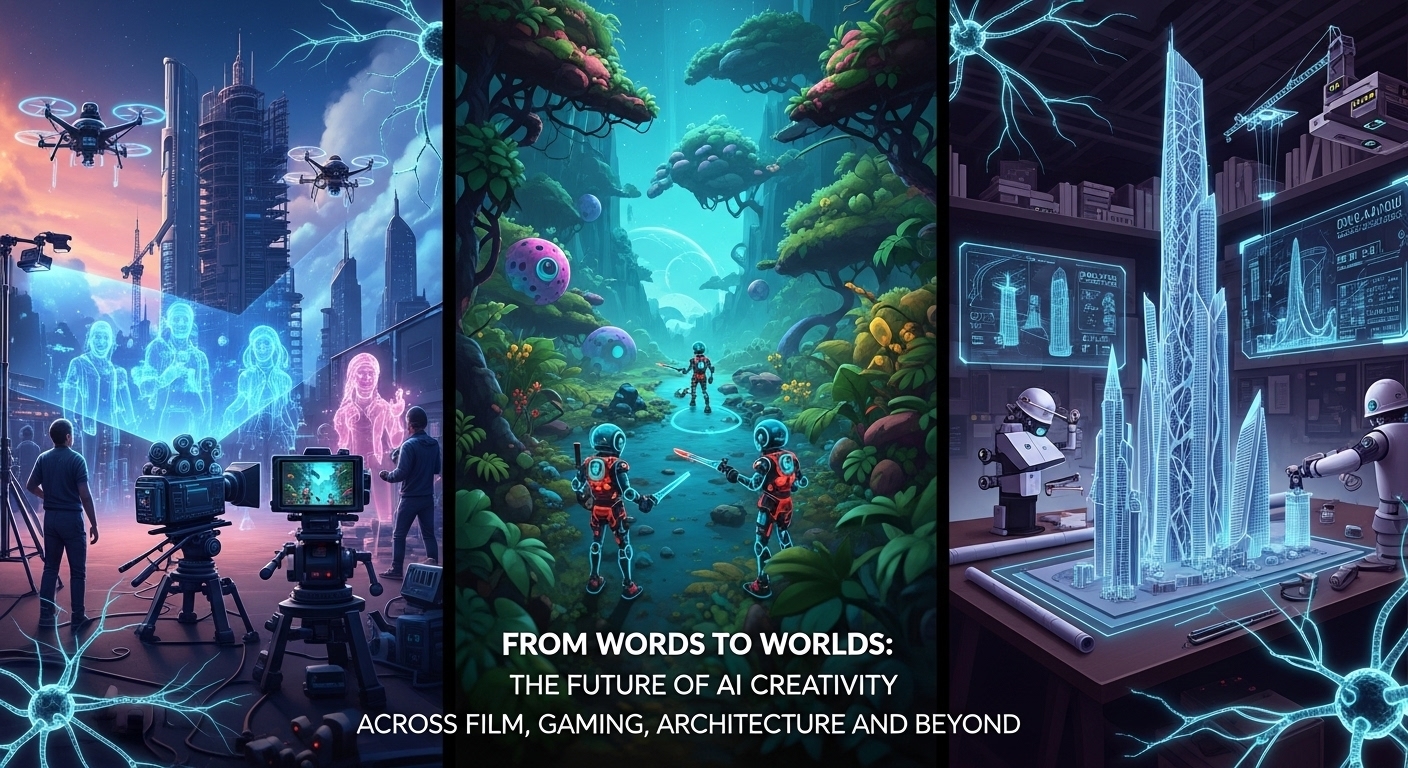
The Expanding Universe of Generative AI Capabilities
Understanding the future of prompt-driven creativity requires appreciating how rapidly AI capabilities are expanding beyond static image generation into dynamic, interactive, and multidimensional domains. Video generation represents perhaps the most visible frontier, with systems like OpenAI’s Sora, Google’s Veo, RunwayML, and others demonstrating the ability to create coherent video sequences from text descriptions. These systems don’t merely string together individual frames; they understand temporal consistency, motion dynamics, and narrative progression. A prompt describing “a person walking through a snowy forest as day transitions to dusk” generates video that maintains character consistency, appropriate lighting changes, and realistic motion throughout the sequence.
The technical challenges of video generation exceed those of static images by orders of magnitude. Systems must maintain temporal coherence across frames, ensuring objects and characters don’t arbitrarily change appearance or disappear. They must understand and generate realistic physics and motion—how objects fall, how water flows, how light shifts with time. They must handle camera movement and perspective changes while maintaining scene consistency. Despite these complexities, recent models demonstrate increasingly impressive capabilities, generating video clips that range from seconds to minutes with remarkable realism and creative coherence.
3D modeling and spatial generation represent another rapidly maturing domain. AI systems can now generate three-dimensional objects, environments, and scenes from text or image prompts, creating digital assets suitable for gaming, virtual reality, architectural visualization, and product design. Tools like NVIDIA’s GauGAN, Google’s DreamFusion, and various Stable Diffusion extensions enable creators to describe desired 3D forms—”a modern minimalist chair with wooden armrests”—and receive editable 3D models. More ambitiously, procedural world generation systems create entire virtual landscapes, cities, or environments from high-level descriptions, populating them with appropriate architectural styles, vegetation, and spatial features.
Audio and music generation completes the multimodal expansion, with systems generating soundscapes, musical compositions, sound effects, and even synthesized voices from text descriptions. A filmmaker might prompt “tense orchestral score building to dramatic crescendo” and receive original music matching that description. A game developer might request “footsteps on gravel transitioning to wooden floorboards” and receive appropriate audio assets. This audio generation capability, combined with video and 3D modeling, enables comprehensive multimedia creation from primarily text-based direction.
Transforming Film and Visual Storytelling
The film and television industries face both profound opportunities and existential questions as prompt-driven AI extends into video generation and comprehensive production tools. Generative AI in filmmaking already assists with numerous production aspects: concept art and storyboarding, background environment generation, visual effects, character design, and post-production enhancement. Studios like Industrial Light & Magic have incorporated AI tools into VFX pipelines, accelerating processes that traditionally required months of manual work. Television shows like The Mandalorian pioneered virtual production techniques using AI-enhanced real-time environments displayed on LED walls, fundamentally changing how scenes are shot and reducing location shooting costs.
Looking forward, the trajectory points toward increasingly comprehensive AI-assisted filmmaking workflows. A director might describe desired shots in natural language—”low-angle dolly shot moving through crowded marketplace as sun sets, emphasizing protagonist’s isolation despite surrounding activity”—and receive generated footage matching that description. Scene variations could be generated instantly, allowing directors to explore creative alternatives without expensive reshooting. Background extras, environment extensions, and even secondary characters might be generated rather than filmed, reducing production costs while expanding creative possibilities.
Projects exploring the frontier of AI-generated narrative content demonstrate both the potential and current limitations. Fable Studio’s “Showrunner” aims to create an AI streaming service where fans can remix and generate variations of popular shows. The viral “South Park AI” demonstration showed algorithmically generated episodes of the animated series, attracting 8 million views. Interactive narrative experiences like “The Alterverse” allow audiences to influence story direction through prompts, creating participatory storytelling formats impossible with traditional media. These experiments suggest future entertainment forms blending aspects of film, gaming, and interactive fiction into novel hybrid media.
However, significant challenges temper near-term expectations. Current AI video generation struggles with narrative coherence across extended sequences, often producing impressive short clips but lacking the sustained character development and plot progression required for feature-length content. Character consistency—maintaining recognizable appearance, voice, and personality across scenes—remains technically challenging. Emotional nuance in performance, the subtle aspects of acting that convey complex feelings, proves difficult for AI to generate convincingly. These limitations suggest that rather than replacing traditional filmmaking, prompt-driven AI will augment human creative direction, handling technical execution while humans provide narrative vision, emotional intelligence, and artistic judgment.
Revolutionizing Gaming and Interactive Entertainment
The gaming industry represents perhaps the most natural domain for prompt-driven AI creativity, given games’ computational nature and existing traditions of procedural content generation. AI-powered game creation tools are already emerging, enabling developers—and increasingly, non-technical creators—to generate game assets, levels, narratives, and even complete games through prompting. Platforms like Rosebud AI, Astrocade, and Videogame AI provide interfaces where users describe desired game mechanics, aesthetics, and experiences, with AI handling much of the implementation.
Non-player characters (NPCs) empowered by generative AI represent a particularly transformative application. Traditional NPCs follow scripted dialogue trees and predetermined behaviors, limiting interaction depth. AI-powered NPCs can engage in open-ended conversation, respond contextually to player actions, and exhibit more dynamic, believable behaviors. Imagine NPCs who can answer questions about game lore in natural language, offer hints tailored to individual player struggles, or improvise reactions to unexpected player choices. Companies like Convai specialize in conversational AI for virtual worlds, enabling NPCs that feel genuinely interactive rather than mechanically scripted.
Procedural content generation powered by AI promises vast, unique game worlds created dynamically rather than manually designed. A game might generate infinite unique planets to explore, each with distinctive ecosystems, architecture, and challenges, all emerging from prompts defining high-level parameters. Quests and narratives could adapt to player choices more organically, with AI generating appropriate story branches rather than following predetermined paths. This approach addresses a persistent challenge in game development: the massive resource investment required to create sufficient content for extended gameplay.
The convergence of gaming and cinematic storytelling through AI generation suggests entirely new entertainment forms. Google DeepMind’s “Genie” foundation model pioneered generating interactive platformer games from video examples, learning to infer character actions and enable player control of AI-generated scenes. Projects exploring this space blur traditional boundaries—are they games where you influence pre-generated narratives, or interactive films where you control the story? This ambiguity points toward hybrid experiences combining gaming’s interactivity with cinematic production values, potentially defining new entertainment categories.

Transforming Architecture and Spatial Design
Architecture and spatial design stand at the cusp of a profound methodological transformation as prompt-driven AI enables rapid visualization, iterative exploration, and generative design approaches. Architectural visualization—creating renderings showing how buildings and spaces will appear—historically required extensive manual modeling, texturing, and rendering. AI generation dramatically accelerates this process, enabling architects to produce compelling visualizations from written descriptions or sketchy preliminary concepts. A prompt like “contemporary sustainable office building with extensive glass facades and integrated rooftop gardens, rendered at twilight with warm interior lighting” can generate photorealistic architectural renderings in minutes rather than days.
Beyond mere visualization efficiency, AI enables genuinely new generative design approaches. Architects can prompt AI systems with functional requirements and constraints—”design a 2,000 square foot single-family home optimizing for natural light, cross-ventilation, and minimal environmental impact”—and receive multiple design options meeting those criteria. The AI explores vast design possibility spaces far more extensively than human designers could manually, potentially discovering innovative solutions that wouldn’t occur to human intuition. Architects then evaluate these AI-generated options, selecting and refining promising directions.
Urban planning and landscape architecture similarly benefit from AI’s ability to generate and evaluate multiple scenarios rapidly. Planners might prompt systems to generate urban layouts optimizing various criteria—walkability, green space access, transportation efficiency, mixed-use integration. The AI produces numerous alternatives, allowing planners to compare options and understand tradeoffs. For landscape architecture, AI can generate planting schemes, hardscape layouts, and site designs from descriptions of desired atmosphere, functionality, and aesthetic character.
Interior design applications demonstrate AI’s consumer-facing potential in spatial design. Tools like IKEA Place use AI to visualize how furniture would appear in actual spaces, helping consumers make confident purchasing decisions. More comprehensive platforms enable users to describe desired room aesthetics—”Scandinavian minimalist bedroom with natural materials and calming color palette”—and receive complete interior design proposals including furniture, lighting, and accessories. This democratizes interior design expertise, making professional-quality spatial planning accessible to homeowners without design backgrounds.
The trajectory points toward integrated design-to-fabrication workflows where prompt-driven design connects seamlessly to manufacturing and construction. Architects might refine AI-generated building designs, then automatically generate construction documentation, material specifications, and fabrication instructions for digital manufacturing systems. This integrated approach could dramatically reduce the time from concept to completion while minimizing errors introduced during traditional hand-offs between design and construction teams.
Immersive Virtual Worlds and the Metaverse
Perhaps nowhere does the future of prompt-driven creativity appear more transformative than in immersive virtual environments, extended reality (XR), and metaverse platforms. These digital spaces depend fundamentally on content creation—3D environments, interactive objects, avatars, effects, experiences—whose production has historically been expensive and time-intensive. AI generation promises to dramatically reduce these barriers, enabling rapid world-building and potentially allowing users to shape virtual environments through natural language.
Virtual reality (VR) and augmented reality (AR) experiences enhanced by AI generation enable more responsive, personalized, and dynamic immersive content. Rather than experiencing identical pre-designed environments, users might describe desired settings—”I want to practice public speaking in an auditorium”—and immediately find themselves in an appropriate AI-generated space. Educational VR could generate custom learning environments tailored to individual students’ needs and interests. Therapeutic VR applications might create calming environments matching patients’ preferences and responding to biometric feedback.
The concept of an AI-driven “holodeck”—referencing Star Trek’s fictional room capable of generating any environment on demand—represents an aspirational goal for immersive AI generation. Recent projects demonstrate early steps toward this vision: frog design’s collaboration with Capgemini created a physical immersive space where users speak descriptions and watch environments transform around them in real-time. While current implementations remain limited compared to science fiction visions, the underlying capability—generating coherent 3D environments from natural language—continues advancing rapidly.
Metaverse platforms combining social interaction, entertainment, commerce, and creation depend heavily on accessible content generation tools. If creating virtual spaces requires professional 3D modeling skills, most users remain passive consumers rather than active creators. Prompt-driven generation inverts this dynamic, potentially enabling any user to describe and create virtual spaces, objects, or experiences. This could catalyze the “creator economy” in virtual worlds, where users generate and potentially monetize diverse virtual content without technical barriers.
Consistent character and avatar generation represents a crucial technical challenge for virtual worlds. Users want recognizable avatars that maintain appearance across different experiences and platforms. Recent AI advances in character consistency—generating the same character from different angles or in different poses—directly address this need. Tools like OpenArt Characters enable creating consistent character images from single references. Extending this capability to animated, articulated 3D avatars suitable for virtual worlds remains an active development frontier.
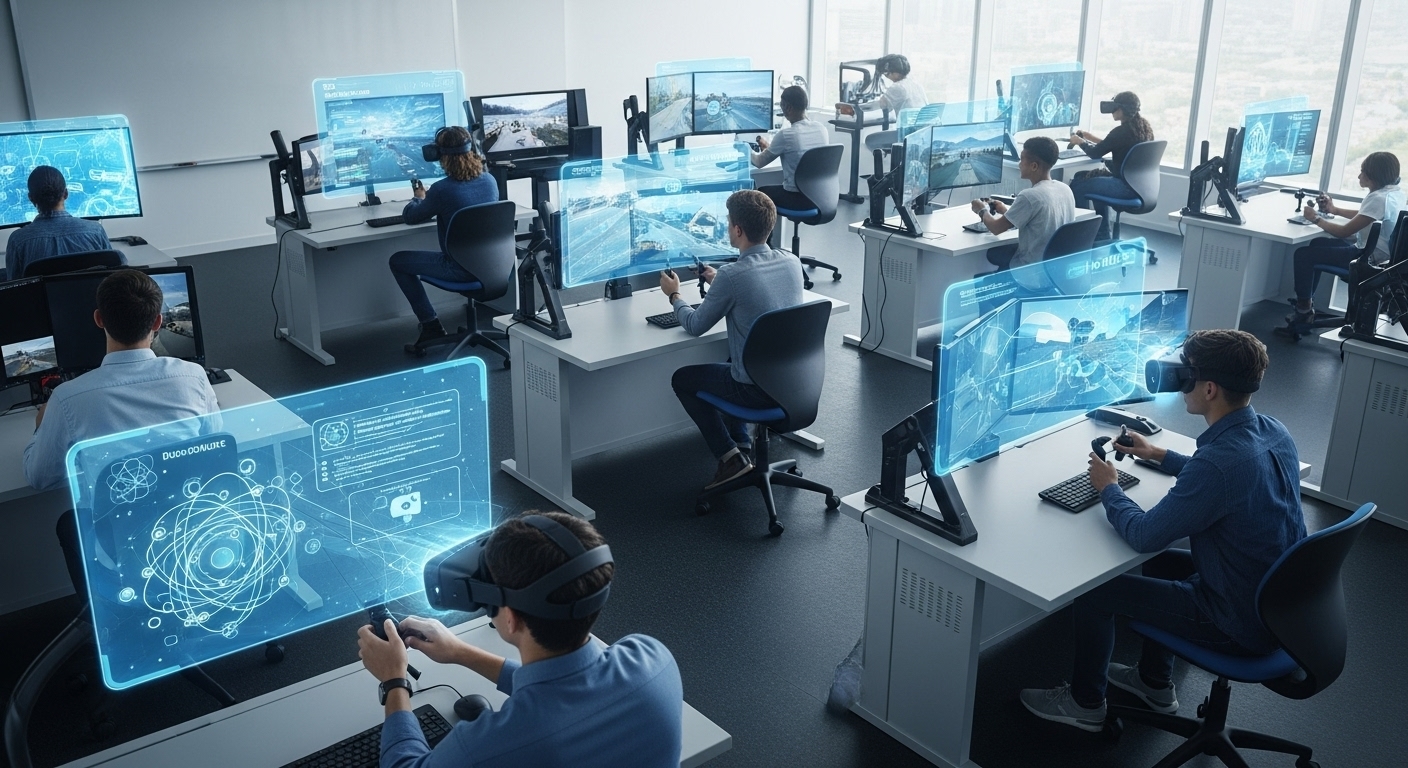
Simulation, Training, and Educational Applications
Beyond entertainment and creative expression, prompt-driven AI generation enables powerful applications in simulation, professional training, and education. These domains require customized scenarios, diverse examples, and adaptive content—precisely what AI generation excels at providing. Medical training simulations can generate diverse patient presentations, rare conditions, and emergency scenarios without requiring actual patients or elaborate physical simulation facilities. A medical student might describe a clinical situation they want to practice—”elderly patient presenting with confusing symptoms suggesting either cardiac or neurological emergency”—and enter an AI-generated immersive simulation for practicing diagnostic reasoning.
Military and emergency response training similarly benefits from AI’s ability to generate varied, realistic scenarios. Traditional training simulations require extensive manual scenario development, limiting the diversity of situations trainees encounter. AI generation enables creating virtually unlimited variations—different terrain, weather conditions, adversary behaviors, equipment failures—ensuring trainees experience broader preparation than manually-designed scenarios allow. The AI can automatically calibrate scenario difficulty based on trainee performance, providing appropriately challenging experiences that optimize learning.
Educational applications span from K-12 through professional development. Teachers can generate custom illustrations, diagrams, and visual aids matching specific lesson content rather than searching for approximations. Students learning historical periods might explore AI-generated immersive reconstructions of ancient cities or historical events. Science education could include interactive simulations where students manipulate variables and observe outcomes in real-time generated visualizations. Language learning might involve conversation with AI characters in immersive virtual environments representing target cultures.
The personalization potential distinguishes AI-generated educational content from traditional materials. Rather than one-size-fits-all textbooks or videos, AI can generate explanations, examples, and practice problems tailored to individual student backgrounds, interests, and current understanding levels. A student struggling with a mathematical concept might receive a series of progressively scaffolded AI-generated examples that specifically address their misconception, presented using metaphors and contexts aligned with their interests. This level of customization approaches the ideal of personal tutoring at a fraction of the cost.

Technical Infrastructure and Enabling Technologies
The future of prompt-driven creativity across these diverse domains depends on continued advancement in several enabling technologies. Foundation models—large-scale AI systems trained on diverse data that can be adapted for specific tasks—provide the base capability. OpenAI’s GPT series, Google’s Gemini, Anthropic’s Claude, and specialized models like Stable Diffusion and Midjourney represent current examples. These models demonstrate increasingly sophisticated reasoning capabilities, understanding complex instructions and maintaining consistency across extended contexts. The evolution toward models with multimodal understanding—processing text, images, audio, video, and 3D spatial information as integrated inputs and outputs—enables comprehensive creative generation.
Real-time processing and interactive generation capabilities transform prompt-driven creation from batch processing to fluid creative dialogue. Rather than submitting a prompt, waiting minutes for results, and then submitting revisions, future systems enable continuous interaction where creators adjust prompts and immediately see updated outputs. This tight feedback loop more closely resembles traditional creative tools where artists directly manipulate materials, reducing friction in the creative process. Achieving real-time performance requires optimized models, specialized hardware, and efficient architectures—ongoing engineering challenges actively being addressed.
Controllability and consistency represent critical technical frontiers. Early generative systems produced impressive but somewhat unpredictable outputs, with limited ability to precisely control specific aspects. Newer systems offer increasingly fine-grained control through techniques like ControlNet (guiding image generation with sketches or edge maps), attention mechanisms (focusing generation on specific regions), and parameter isolation (adjusting individual attributes independently). For applications requiring consistency—maintaining character appearance across video sequences, ensuring architectural designs meet specific constraints—these control mechanisms prove essential.
Integration and workflow embedding determine whether AI generation remains a separate specialty tool or becomes ambient capability woven throughout creative practice. Adobe’s integration of Firefly across Creative Cloud applications exemplifies the embedded approach, where AI generation is contextually available within familiar tools. Similarly, game engines incorporating AI generation enable developers to create assets without switching to separate applications. The most successful implementations make AI generation feel like a natural extension of existing workflows rather than a disruptive addition requiring new toolchains.
Ethical Considerations and Societal Implications
The expansion of prompt-driven AI creativity into film, gaming, architecture, and immersive experiences amplifies ethical questions already apparent in image generation. Labor displacement concerns intensify as AI capabilities extend to video editing, 3D modeling, game development, and other currently human-dominated roles. Visual effects artists, game asset creators, architectural visualization specialists, and various technical creatives face potential economic pressure as AI handles tasks they currently perform. Unlike abstract debates about distant future automation, these impacts affect working professionals today.
Training data provenance and consent remain contentious. Video generation models trained on films and television shows, game asset generators trained on commercial game art, architectural AI trained on copyrighted building designs—all raise questions about whether using creative works for training without explicit permission constitutes infringement or transformative fair use. Courts worldwide are adjudicating these questions with potentially industry-defining implications. The resolution will shape whether AI development proceeds with current broad training approaches or transitions to more restrictive models using only explicitly licensed data.
Authenticity and misinformation concerns take on new urgency as AI video generation becomes more convincing. Already, deepfake videos demonstrate alarming potential for creating misleading visual evidence. As generation quality improves, distinguishing authentic footage from AI-generated content becomes increasingly challenging. This poses risks for journalism, legal proceedings, political discourse, and personal reputation. Technical approaches like content provenance systems—embedding cryptographic signatures proving content origins—offer potential mitigations, but their effectiveness depends on widespread adoption.
Accessibility and democratization benefits must be weighed against potential harms. Prompt-driven creation genuinely lowers barriers, enabling more people to realize creative visions and participate in digital content creation. This democratization could enrich cultural diversity and enable voices previously excluded by technical or economic barriers. However, if AI systems perpetuate biases present in training data or if access to the most capable systems concentrates among wealthy individuals and corporations, democratization remains superficial. Ensuring equitable access and addressing bias require deliberate policy choices and technical interventions.
Human oversight and autonomy emerge as central design questions. Should AI systems generate content autonomously based on high-level goals, or should they require explicit human approval for each decision? In gaming, should AI NPCs have freedom to generate unpredictable dialogue, or should all possible statements be pre-approved? In architectural design, should AI-generated plans proceed to construction based on algorithmic optimization, or must human architects validate every aspect? These questions involve both safety considerations—preventing harmful outputs—and philosophical concerns about preserving meaningful human agency in creation.
Conclusion: The Prompt as Universal Creative Interface
The expansion of prompt-driven AI creativity from static images into video, 3D modeling, virtual environments, architectural design, gaming, and immersive experiences represents a fundamental shift in how humans manifest ideas and shape both digital and physical realities. Natural language—humanity’s most fundamental communication medium—is becoming the universal interface for creation across domains previously requiring specialized technical skills. This transformation promises to democratize creative expression while simultaneously challenging traditional notions of authorship, expertise, and the value of creative labor.
The future taking shape involves not a binary outcome where AI either empowers humans or displaces them, but a complex, contested negotiation about the relationship between human creativity and computational capability. In optimistic scenarios, prompt-driven AI liberates human attention from technical execution to focus on conceptual vision, strategic thinking, and the uniquely human contributions of emotional intelligence, cultural context, and aesthetic judgment. Designers become creative directors guiding AI outputs rather than manually executing every detail. Filmmakers explore narrative possibilities at unprecedented speeds, rapidly visualizing alternatives that would be impractical to shoot traditionally. Architects generate and evaluate design options impossible to manually develop in available timeframes. Students and educators create personalized learning materials tailored to individual needs.
In pessimistic scenarios, creative professions face downward economic pressure as capable AI systems reduce demand for human creators. Technical skills painstakingly acquired become economically valueless as algorithms perform equivalent work nearly instantly. Aesthetic homogenization spreads as creators converge on AI-generated visual languages. Corporate control of the most capable AI systems concentrates creative power and economic benefits. Misinformation and manipulation proliferate as sophisticated generated content becomes indistinguishable from authentic material.
The actual trajectory will be shaped by choices—technical design decisions, economic structures, educational priorities, regulatory frameworks, and collective values about the role of human creativity. Ensuring this transformation benefits broad populations rather than narrow interests requires deliberate effort: developing AI systems that augment human capability rather than merely substitute for it, creating economic models that fairly compensate creators whose work enables AI training, building educational systems that prepare people for AI-augmented creative work, and establishing ethical guidelines that protect against misuse while enabling beneficial applications.
The future emerging from prompt-driven AI creativity holds extraordinary potential—worlds conjured from words, experiences shaped by descriptions, spaces manifested from imagination. Realizing this potential in ways that genuinely empower human creativity while navigating legitimate concerns about displacement, authenticity, and equity represents one of the defining challenges facing creative industries, technology developers, and society in the decades ahead. The prompts we craft today—both the literal instructions we give AI systems and the metaphorical prompts guiding policy and development—will shape what creative futures become possible.



